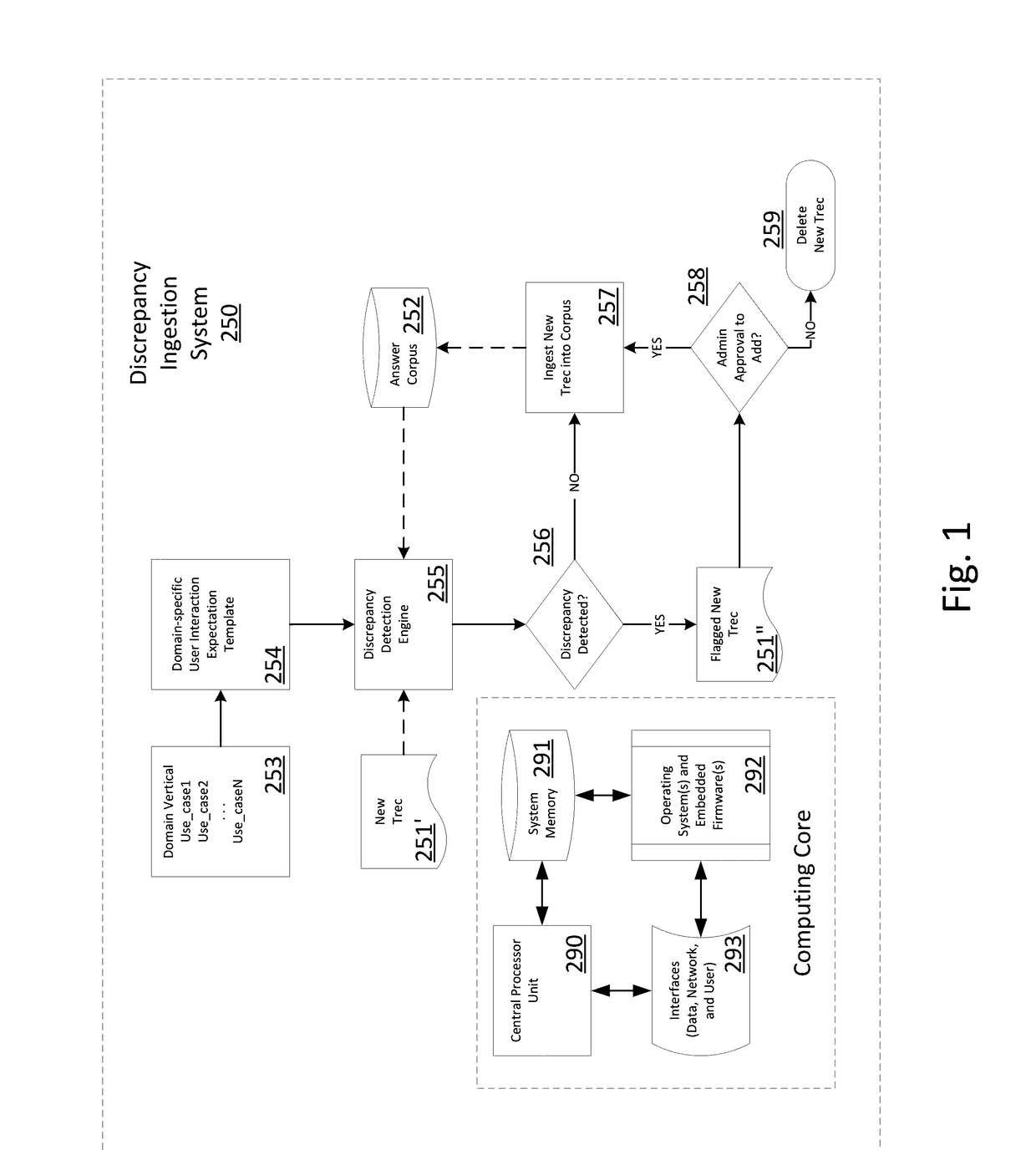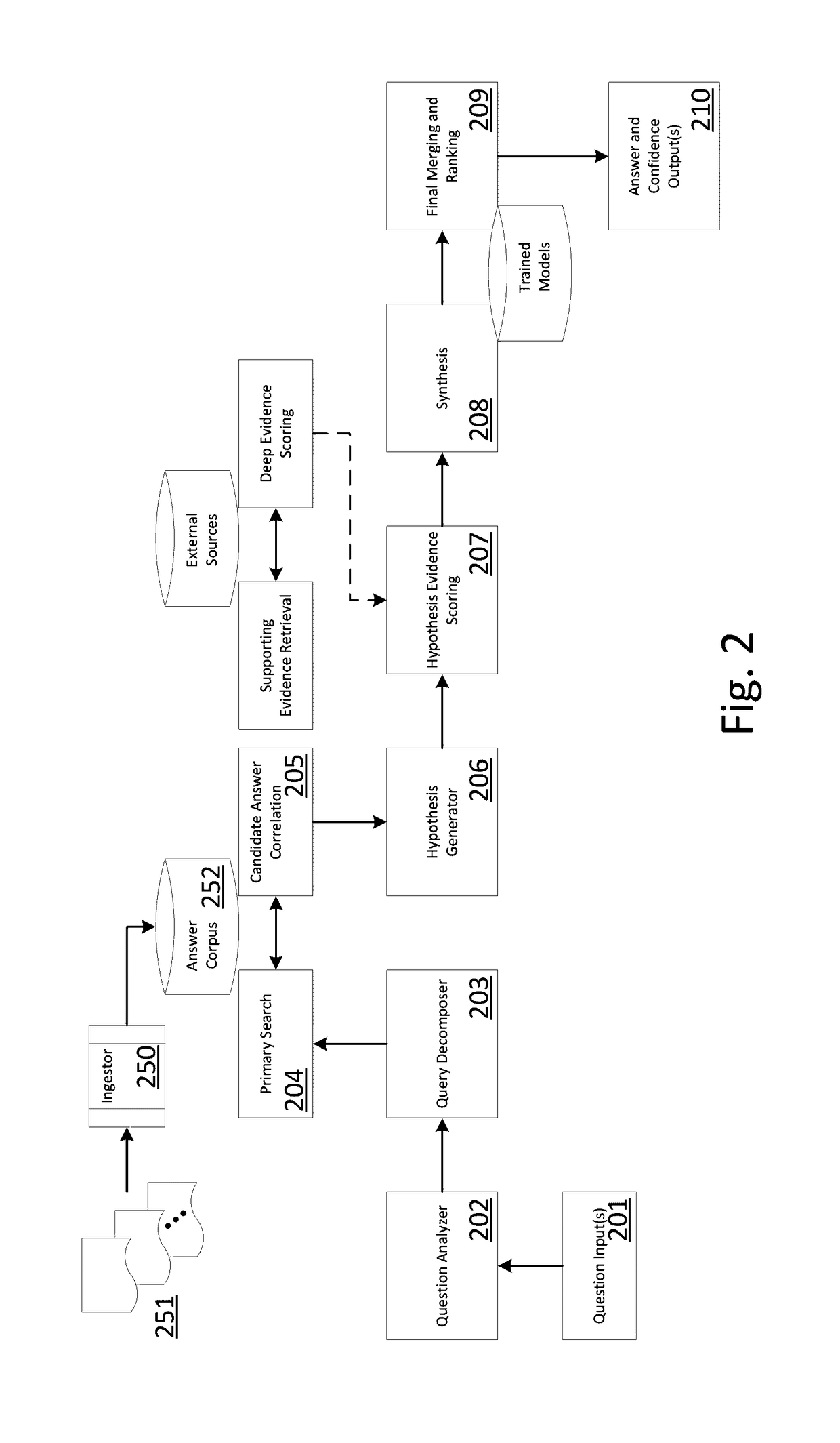Discrepancy Handler for Document Ingestion into a Corpus for a Cognitive Computing System
a cognitive computing system and document handler technology, applied in the direction of document management systems, instruments, unstructured textual data retrieval, etc., can solve the problems of high time pressure to get stories and reports published, and it is difficult for human readers of such manuals to discern the differences between the two versions
- Summary
- Abstract
- Description
- Claims
- Application Information
AI Technical Summary
Benefits of technology
Problems solved by technology
Method used
Image
Examples
first example embodiment
[0040] A Discrepancy Detection Engine The document ingestion pre-processor (250) in the present example embodiment would be added to a cognitive computing system as shown and discussed with respect to FIG. 2. Upon addition of a document or user-selection of an analyze option on a user interface, the ingested documents will be analyzed according to the logical processes and machine logic described herein, such as using a machine logic process shown in FIG. 1.
[0041]This particular embodiment is realized using a computing core (e.g., CPU 290, system memory 291, various communication and user interfaces 293, and one or more operating systems and optional embedded firmware 292) which performs a logical process (253-259), such as by executing program instructions, operating specialized integrated circuits, or a combination of executing instructions and operating circuits.
[0042]An ingested “document”, for the purposes of the present disclosure, shall include one or more of each of the foll...
PUM
 Login to View More
Login to View More Abstract
Description
Claims
Application Information
 Login to View More
Login to View More - R&D
- Intellectual Property
- Life Sciences
- Materials
- Tech Scout
- Unparalleled Data Quality
- Higher Quality Content
- 60% Fewer Hallucinations
Browse by: Latest US Patents, China's latest patents, Technical Efficacy Thesaurus, Application Domain, Technology Topic, Popular Technical Reports.
© 2025 PatSnap. All rights reserved.Legal|Privacy policy|Modern Slavery Act Transparency Statement|Sitemap|About US| Contact US: help@patsnap.com



